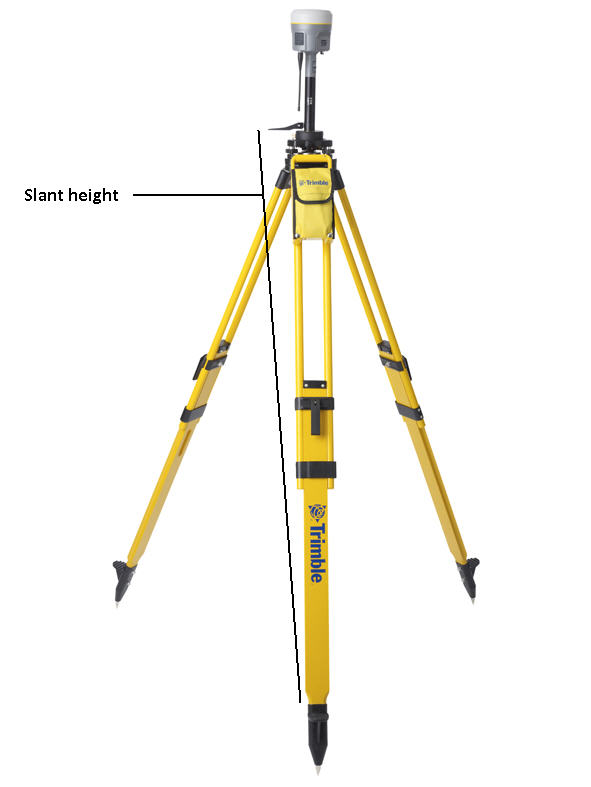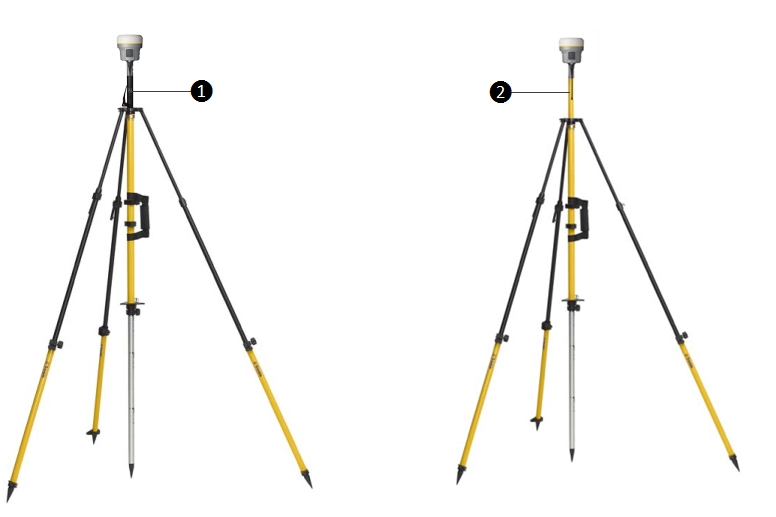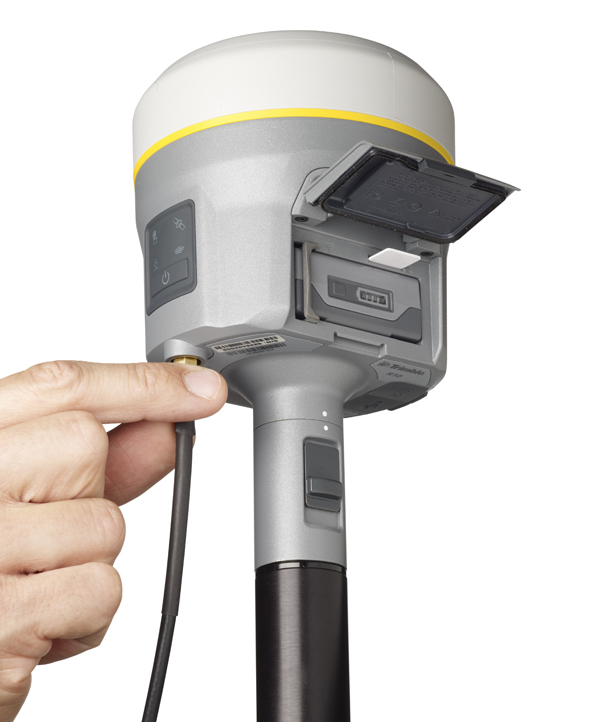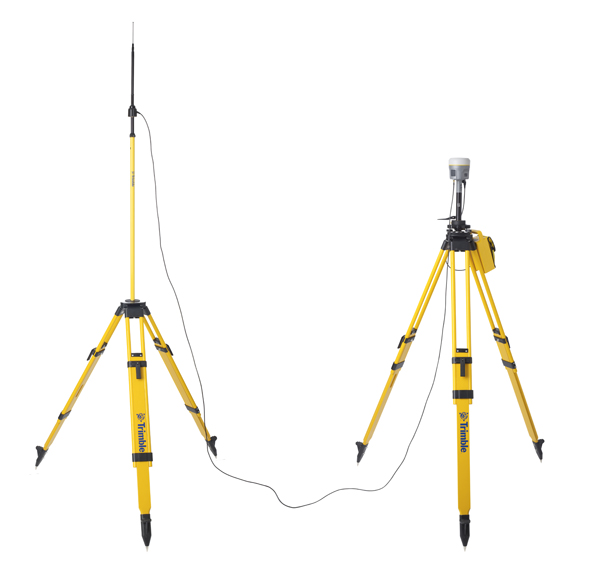Common ways to set up a base station
Trimble recommends that you use a tripod and tribrach setup or a fixed height tripod. The fixed height tripod is quicker and easier to set up over a control point.
Take great care to ensure that the GNSS antenna is set up accurately over the control point, and that the GNSS antenna height is measured accurately, in the right way (vertical or slope height) to the right location on the antenna (base of antenna or to a specified location on the antenna) or height extension pole with height measurement lever (P/N 89846-00) or Base Station Kit (P/N 89861-00). When you start the rover receiver, it is important to check in, at one or more known locations, to check for possible position or height errors. Checking in at a known location is good practice and can avoid costly errors caused by a bad setup.
Tripod and tribrach setup
In the tripod setup, the tripod is located over the control point, and the tribrach, tribrach adaptor, and height extension pole with measurement lever is mounted on the tripod and centered over the point.
-
Mount the quick release adapter onto the height extension pole with measurement lever.
-
Screw the height extension pole with measurement lever into the tribrach. Attach the GNSS receiver to the quick release adapter.
-
Level and plumb the GNSS receiver over the control point.
-
Measure the height of the base station GNSS antenna by measuring the slant height from the control point to the measurement lever. Select the “Lever of R10 extension” as the measurement method when starting the base station. Trimble Access calculates the height to the Antenna Phase Center (APC) automatically.
-
If required, connect the GNSS receiver to an external 12 V power supply. Use the external battery cable set (P/N 89864-00) or the Trimble custom 6 Ah power pack (P/N 32364-10).

Receiver tripod and tribrach setup with an internal 450 MHz Tx radio (Measuring Slant Height)
Fixed height tripod setup
A fixed height tripod
-
Screw the quick release adapter onto the tripod head or extension pole used to increase the height of the receiver above the tripod head.
-
Attach the GNSS receiver to the quick release adapter.
-
Plumb and level the tripod over the control point.
-
Determine the height of the base station GNSS antenna by adding the fixed height of the tripod from the control point to the tripod head to the height of any extension pole used to increase the height of the receiver. Select the “Bottom of Quick Release” as the measurement method when starting the base station. Trimble Access calculates the height to the Antenna Phase Center (APC) automatically.
-
If required, connect the GNSS receiver to an external 12 V power supply. Use the crocodile clip cable or the Trimble custom power pack.

|
❶ |
Base extension with height measurement lever |
|
❷ |
Standard 20 cm extension pole |
Receiver with an internal 450 MHz Transmit radio on a fixed height tripod
Measuring to the measurement lever is not required when using a fixed height tripod. If the base station extension with measurement lever is used with a fixed height tripod, the height of the extension pole (0.15m (0.49ft)) should be added to the height of the fixed height tripod and the measurement method “bottom of quick release” used.
Using a remote radio antenna with the receiver
A remote radio antenna can be used with the Trimble R10 GNSS receiver’s internal 450 MHz radio. The remote antenna allows the use of a high gain antenna (country dependent) and the ability to increase the height of the radio antenna for a larger coverage area. The remote antenna cable and mount, along with the high gain antenna, is available as an accessory for the receiver (P/N 89856-00-6x, radio frequency dependent).
Typically, the tripod and fixed height tripod methods do not give significant height clearance above the ground, and can reduce the range of operation caused by radio limitations.

Connecting remote radio antenna cable to the receiver

Receiver with a remote radio antenna
Using an external radio with the receiver
An external radio can be used with the Trimble R10 GNSS receiver. Using a high-powered UHF radio will increase the radio coverage area. The external radio data cable is connected to Port 1 (Serial) on the receiver.